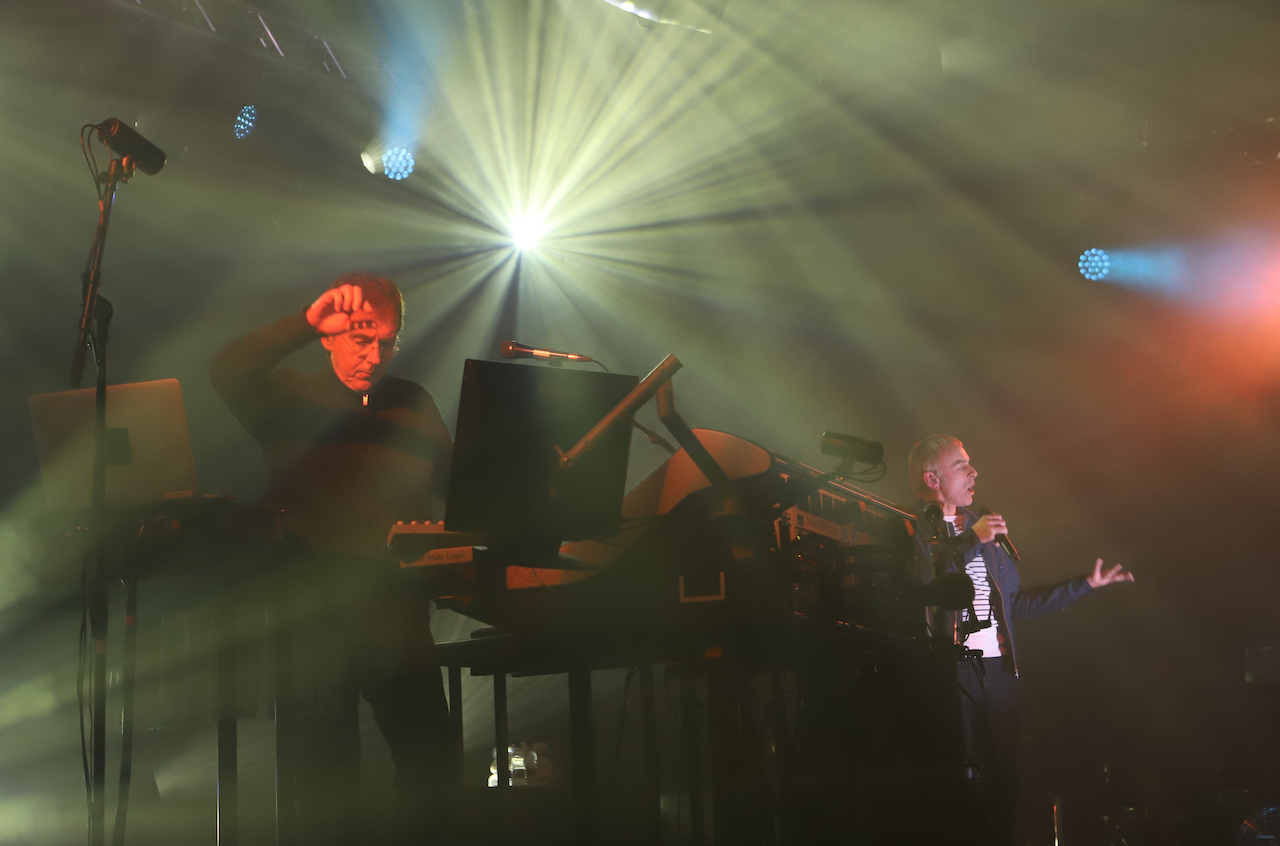- When you think of Icelandic music, the likes of Björk, Sigur Rós and the late Jóhann Jóhannsson probably spring to mind. But my perception of the country's music culture changed drastically on Friday night, when local hero Countess Malaise walked onstage at Sónar Reykjavík 2018. She's one of several fearless artists at the forefront of the city's bubbling underground hip-hop scene, alongside Lord Pusswhip, female collective Reykjavíkurdætur and Cyber, a trio who mix thrash metal with pop and experimental rap. Rapping in a sterile seated amphitheatre wasn't easy, but Malaise's flow and delivery were impressive. She owned the room, setting the tone for an exciting weekend of boundary-pushing sounds.
In the spirit of the flagship Barcelona festival, Sónar Reykjavík's wider programme was an intriguing mix of international headliners (Underworld), experimental artists (JASSS, Lorenzo Senni), globetrotting DJs (Lena Willikens, Denis Sulta) and weird and wonderful locals (Sykur, Árni Skeng). This year, the festival shrank from three nights to two, returning to its spiritual home at the spectacular Harpa Concert Hall, which the head booker described to me as the event's "identity." Without it, the festival couldn't exist.
Another big selling point is Iceland itself. The country has a surreal quality, from the otherworldly landscapes that surround Reykjavík to the strange happenings that caught my attention throughout the weekend. There was Björk raving to Jlin in a mask, and the Aurora Borealis (AKA Northern Lights), which were active and visible over the harbour. I also won't forget the sight of hundreds of Icelanders singing happy birthday to US rapper Danny Brown.
Here are five key performances from the festival.
Volruptus
"He brought the BASS from outer SPACE!" reads Volruptus's artist bio on the Sónar Reykjavík website. On Friday night, the mysterious Icelandic artist closed SónarLab, a stage in Harpa's underground car park. (Both nights in the space were co-curated by Resident Advisor.) I wasn't familiar with his music before the weekend, but I was deeply impressed with his set. Flanked by an entourage of dancing friends, he unleashed an onslaught of live machine music, a blend of Drexciyan electro, Miami bass and hardcore, all woven together with panache and remarkable speed. The BPMs, which rarely dropped below 170, rose nearer to 200 towards the end. The performance was a live hybrid of largely new material, and, in the final 30 minutes, I managed to ID one of the unreleased tracks: "Misanthropy (Dark Stöff)." Dozens of trendy young Icelanders in bbbbbb Records merch danced manically to cuts like this until the lights came on at 3AM. Judging by this performance, Volruptus, already a national hero, could cause waves further afield in the coming year.
Kode9 x Kōji Morimoto AV
Having missed their set at fabric in November, Kode9 and Japanese anime director Kōji Morimoto's audiovisual show was high on my list. A lot of Morimoto's new illustrated material had been animated and retreated by the multidisciplinary visual artist Tom Scholefield (AKA Konx-om-Pax). Performing in SonarComplex, a seated auditorium with steep stairs, Kode9 delivered a high-energy hybrid set featuring dozens of obscure 8-bit and 16-bit video game soundtracks, such as Genpei Tōma Den, The Revenge Of Shinobi and the widely popular Streets Of Rage series. Though too young for those titles the first time round, I still felt a warm wash of nostalgia for my own childhood days spent playing Game Boy and SNES. The music was dynamic and seamlessly stitched together, while the footage—spliced shots of dreamy cyberpunk vistas, fiendish ghosts and murderous android dolls—was stunning. I emerged with that familiar buzz of elation you only get from seeing something beautiful at the cinema.
Klein
After seeing Klein play an experimental DJ set alongside Embaci at Corsica Studios last year, I was excited to see her solo live performance. Helped by her early 10 PM slot, she completely packed out SónarComplex on Saturday, filling all the seats and stairwells. Bandana-clad and bathed in green light, she stood side-on to the crowd facing her equipment. She has a quiet yet remarkably strong stage presence for someone relatively new on the scene. The set went down an avant-garde path, journeying through swirling ambience, off-kilter piano keys, soundtrack samples (including a long monologue about going to college) and manipulations of her own vocals through a microphone. After "Cry Theme," she addressed the audience: “I never cry...," which was greeted with a huge clamour of applause. As the show ended, Björk emerged from one of the front rows and floated backstage, presumably to congratulate Klein for killing it.
Reykjavíkurdætur
Reykjavíkurdætur translates directly as "Daughters Of Reykjavík." When I first studied the lineup, the ten-strong female hip-hop collective immediately jumped out. Their artist bio promised an "energetic stage performance," which ended up being a massive understatement.
The vibe in SónarHall was like no other at the festival. I can only compare it to being at a teenage pop concert, with hundreds of crazed young fans—the vast majority of them girls—absolutely losing their shit to ten girls dressed as cheerleaders, their outfits emblazoned with the letters "RUK DTA." They rapped while busting out choreographed dance moves. The core of their ideology is "to rebel against conservative misogynistic values of modern society," a message reflected in the Icelandic lyrics. Most of the tracks were covers of US pop and hip-hop tunes, each performed by individual members of the crew. The show was meant to be provocative, with visuals of guns, diamonds, pink superbikes and bundles of fluorescent swirling penises featuring heavily. Switching between SónarHall and Harpa’s 1,800-capacity main stage, where Underworld was performing, felt like teleporting between generations.
Underworld
Seeing Underworld on Saturday night took me back to my first ever Sónar Barcelona in 2011, when the legendary rave duo also headlined. This time the venue was a fraction of the size, with Harpa's 1,800-capacity main stage, SónarClub, completely rammed. It was their first time in Iceland since 1994—international bands rarely tour there—and the atmosphere was hot, heavy and electric.
Karl Hyde, aged 60, remains every bit the rockstar. Known for his eccentric dancing, he put on a proper show for the crowd, clutching his crotch while rattling through Underworld's back catalogue of timeless anthems, such as "Low Burn" and "Rez." During "Dark & Long (Dark Train)," the entire room chanted "like a train, like a train, like a train," punching the lasers with every stab of the track's euphoric chords. Before breaking into "Jumbo," Hyde whispered "I love an Essex groove... I love a Welsh groove even more."
I dipped out for about 15 minutes with the intention of returning for "Born Slippy," but by the time I got back the lights were up and revellers were pouring out like steam off the surface of the Blue Lagoon. I ran into a friend and asked him about the crescendo. "I've just seen Underworld close with 'Born Slippy,'" he said. "And there was a teenage couple making out next to me in ecstasy the whole time. It was certainly a climax."
Photo credit /
Kasia Zacharko - Lead, Volruptus, Kode9 X Koji Morimoto AV
Hjördís Jónsdóttir - Klein
Ásgeir Helgi - Reykjavíkurdætur
Aníta Björk - Underworld
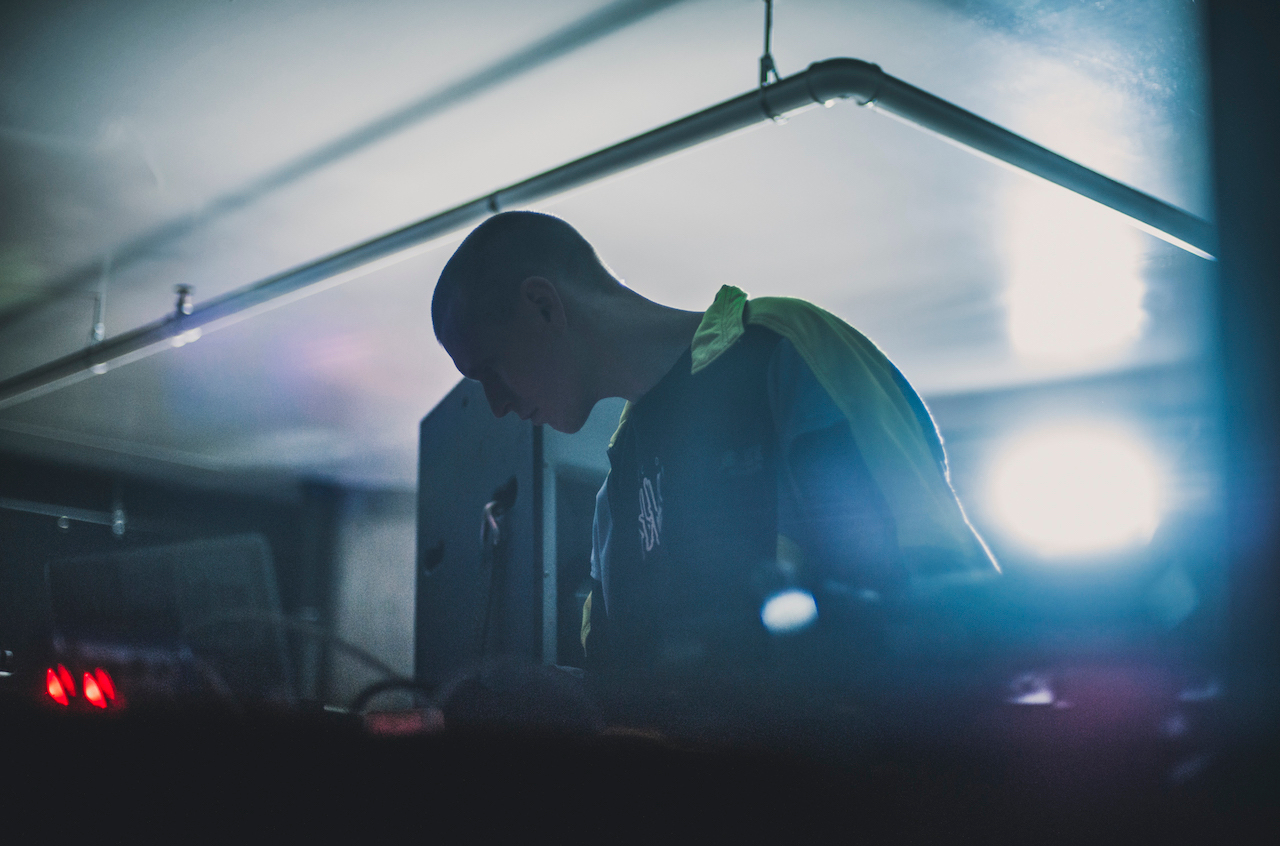 Kode9 x Kōji Morimoto AV Having missed their set at fabric in November, Kode9 and Japanese anime director Kōji Morimoto's audiovisual show was high on my list. A lot of Morimoto's new illustrated material had been animated and retreated by the multidisciplinary visual artist Tom Scholefield (AKA Konx-om-Pax). Performing in SonarComplex, a seated auditorium with steep stairs, Kode9 delivered a high-energy hybrid set featuring dozens of obscure 8-bit and 16-bit video game soundtracks, such as Genpei Tōma Den, The Revenge Of Shinobi and the widely popular Streets Of Rage series. Though too young for those titles the first time round, I still felt a warm wash of nostalgia for my own childhood days spent playing Game Boy and SNES. The music was dynamic and seamlessly stitched together, while the footage—spliced shots of dreamy cyberpunk vistas, fiendish ghosts and murderous android dolls—was stunning. I emerged with that familiar buzz of elation you only get from seeing something beautiful at the cinema.
Kode9 x Kōji Morimoto AV Having missed their set at fabric in November, Kode9 and Japanese anime director Kōji Morimoto's audiovisual show was high on my list. A lot of Morimoto's new illustrated material had been animated and retreated by the multidisciplinary visual artist Tom Scholefield (AKA Konx-om-Pax). Performing in SonarComplex, a seated auditorium with steep stairs, Kode9 delivered a high-energy hybrid set featuring dozens of obscure 8-bit and 16-bit video game soundtracks, such as Genpei Tōma Den, The Revenge Of Shinobi and the widely popular Streets Of Rage series. Though too young for those titles the first time round, I still felt a warm wash of nostalgia for my own childhood days spent playing Game Boy and SNES. The music was dynamic and seamlessly stitched together, while the footage—spliced shots of dreamy cyberpunk vistas, fiendish ghosts and murderous android dolls—was stunning. I emerged with that familiar buzz of elation you only get from seeing something beautiful at the cinema.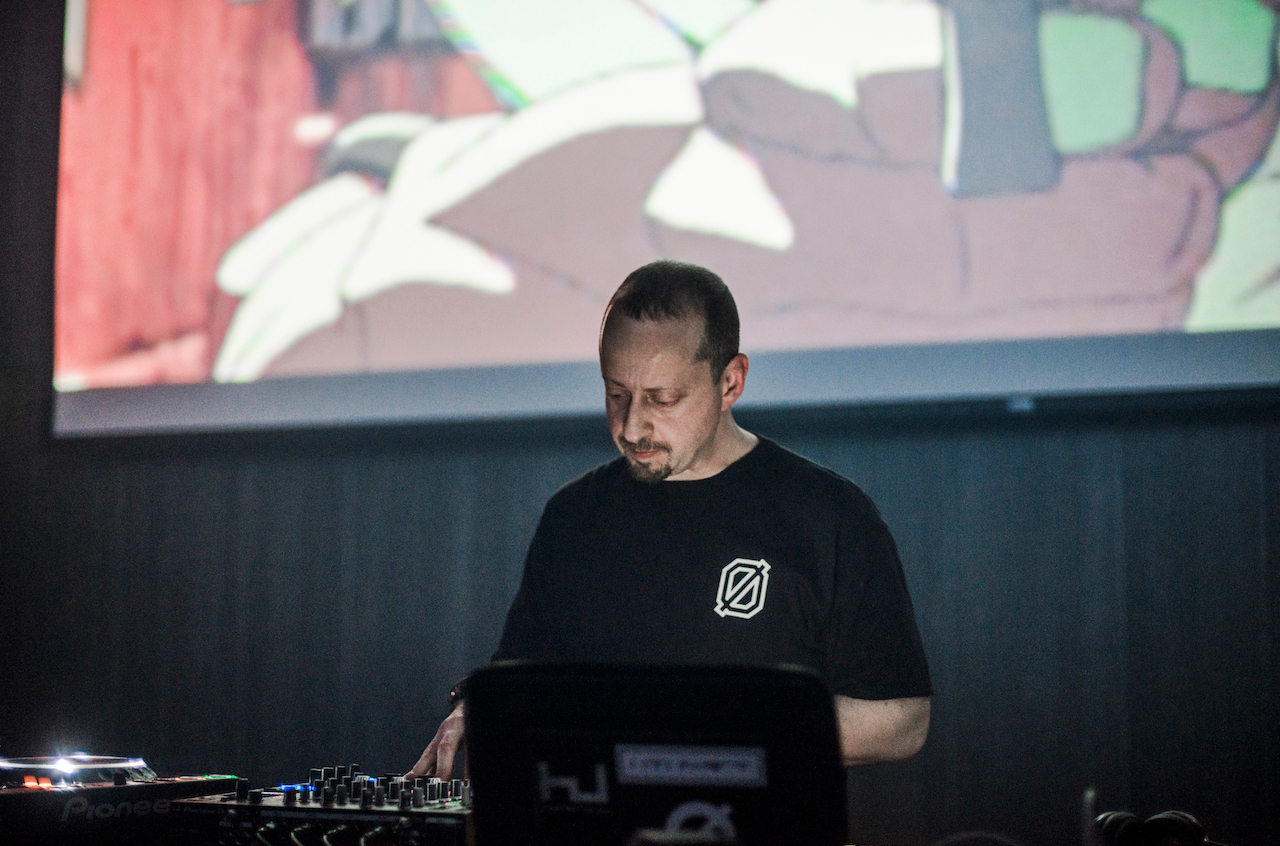 Klein After seeing Klein play an experimental DJ set alongside Embaci at Corsica Studios last year, I was excited to see her solo live performance. Helped by her early 10 PM slot, she completely packed out SónarComplex on Saturday, filling all the seats and stairwells. Bandana-clad and bathed in green light, she stood side-on to the crowd facing her equipment. She has a quiet yet remarkably strong stage presence for someone relatively new on the scene. The set went down an avant-garde path, journeying through swirling ambience, off-kilter piano keys, soundtrack samples (including a long monologue about going to college) and manipulations of her own vocals through a microphone. After "Cry Theme," she addressed the audience: “I never cry...," which was greeted with a huge clamour of applause. As the show ended, Björk emerged from one of the front rows and floated backstage, presumably to congratulate Klein for killing it.
Klein After seeing Klein play an experimental DJ set alongside Embaci at Corsica Studios last year, I was excited to see her solo live performance. Helped by her early 10 PM slot, she completely packed out SónarComplex on Saturday, filling all the seats and stairwells. Bandana-clad and bathed in green light, she stood side-on to the crowd facing her equipment. She has a quiet yet remarkably strong stage presence for someone relatively new on the scene. The set went down an avant-garde path, journeying through swirling ambience, off-kilter piano keys, soundtrack samples (including a long monologue about going to college) and manipulations of her own vocals through a microphone. After "Cry Theme," she addressed the audience: “I never cry...," which was greeted with a huge clamour of applause. As the show ended, Björk emerged from one of the front rows and floated backstage, presumably to congratulate Klein for killing it.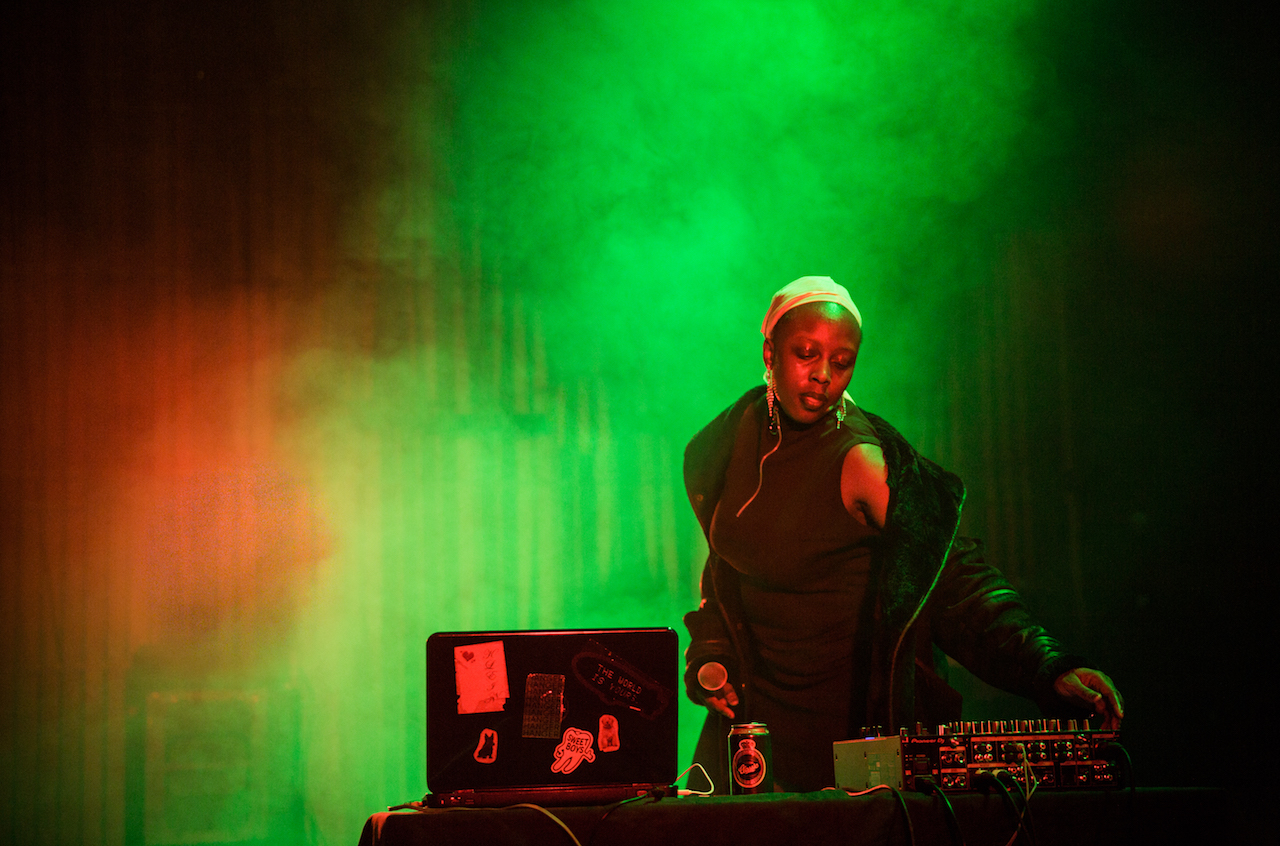 Reykjavíkurdætur Reykjavíkurdætur translates directly as "Daughters Of Reykjavík." When I first studied the lineup, the ten-strong female hip-hop collective immediately jumped out. Their artist bio promised an "energetic stage performance," which ended up being a massive understatement. The vibe in SónarHall was like no other at the festival. I can only compare it to being at a teenage pop concert, with hundreds of crazed young fans—the vast majority of them girls—absolutely losing their shit to ten girls dressed as cheerleaders, their outfits emblazoned with the letters "RUK DTA." They rapped while busting out choreographed dance moves. The core of their ideology is "to rebel against conservative misogynistic values of modern society," a message reflected in the Icelandic lyrics. Most of the tracks were covers of US pop and hip-hop tunes, each performed by individual members of the crew. The show was meant to be provocative, with visuals of guns, diamonds, pink superbikes and bundles of fluorescent swirling penises featuring heavily. Switching between SónarHall and Harpa’s 1,800-capacity main stage, where Underworld was performing, felt like teleporting between generations.
Reykjavíkurdætur Reykjavíkurdætur translates directly as "Daughters Of Reykjavík." When I first studied the lineup, the ten-strong female hip-hop collective immediately jumped out. Their artist bio promised an "energetic stage performance," which ended up being a massive understatement. The vibe in SónarHall was like no other at the festival. I can only compare it to being at a teenage pop concert, with hundreds of crazed young fans—the vast majority of them girls—absolutely losing their shit to ten girls dressed as cheerleaders, their outfits emblazoned with the letters "RUK DTA." They rapped while busting out choreographed dance moves. The core of their ideology is "to rebel against conservative misogynistic values of modern society," a message reflected in the Icelandic lyrics. Most of the tracks were covers of US pop and hip-hop tunes, each performed by individual members of the crew. The show was meant to be provocative, with visuals of guns, diamonds, pink superbikes and bundles of fluorescent swirling penises featuring heavily. Switching between SónarHall and Harpa’s 1,800-capacity main stage, where Underworld was performing, felt like teleporting between generations.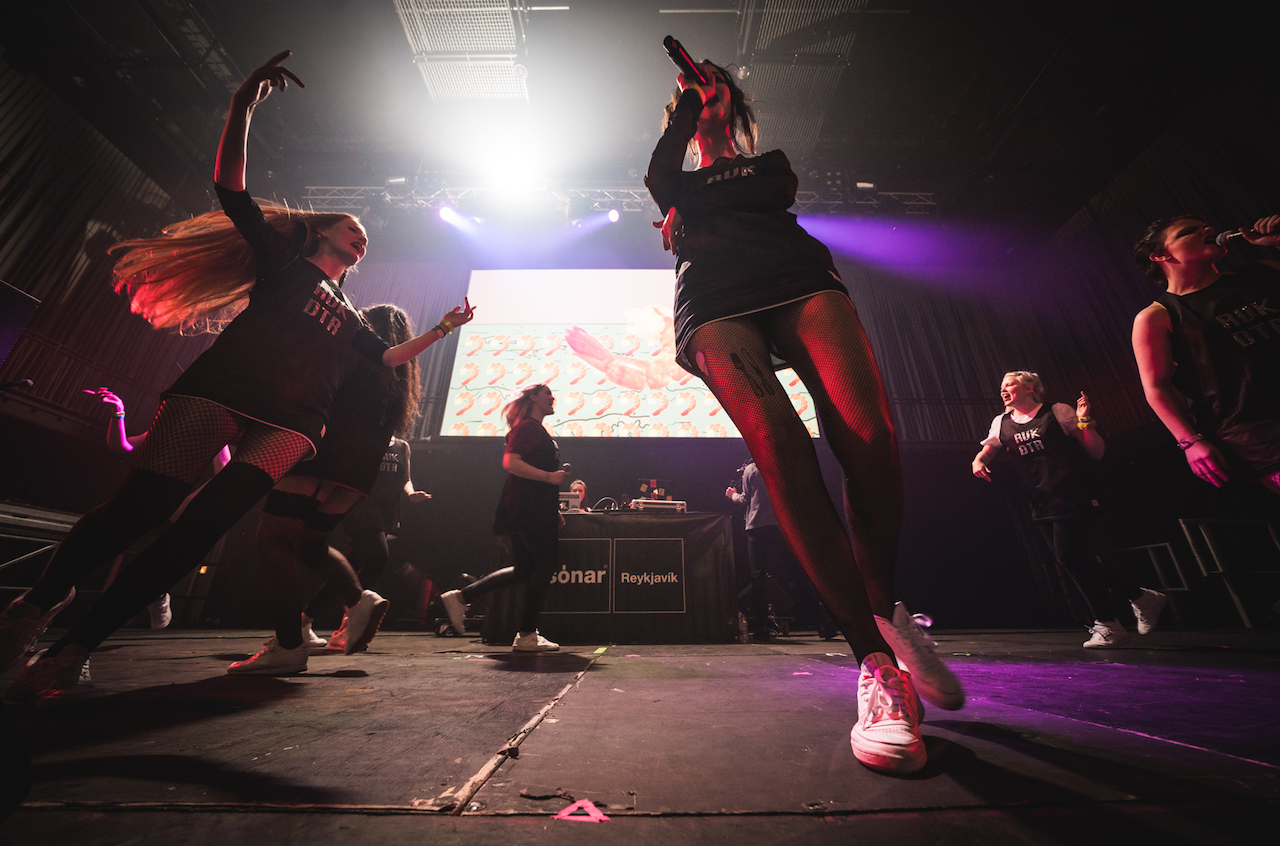 Underworld Seeing Underworld on Saturday night took me back to my first ever Sónar Barcelona in 2011, when the legendary rave duo also headlined. This time the venue was a fraction of the size, with Harpa's 1,800-capacity main stage, SónarClub, completely rammed. It was their first time in Iceland since 1994—international bands rarely tour there—and the atmosphere was hot, heavy and electric. Karl Hyde, aged 60, remains every bit the rockstar. Known for his eccentric dancing, he put on a proper show for the crowd, clutching his crotch while rattling through Underworld's back catalogue of timeless anthems, such as "Low Burn" and "Rez." During "Dark & Long (Dark Train)," the entire room chanted "like a train, like a train, like a train," punching the lasers with every stab of the track's euphoric chords. Before breaking into "Jumbo," Hyde whispered "I love an Essex groove... I love a Welsh groove even more." I dipped out for about 15 minutes with the intention of returning for "Born Slippy," but by the time I got back the lights were up and revellers were pouring out like steam off the surface of the Blue Lagoon. I ran into a friend and asked him about the crescendo. "I've just seen Underworld close with 'Born Slippy,'" he said. "And there was a teenage couple making out next to me in ecstasy the whole time. It was certainly a climax." Photo credit / Kasia Zacharko - Lead, Volruptus, Kode9 X Koji Morimoto AV Hjördís Jónsdóttir - Klein Ásgeir Helgi - Reykjavíkurdætur Aníta Björk - Underworld
Underworld Seeing Underworld on Saturday night took me back to my first ever Sónar Barcelona in 2011, when the legendary rave duo also headlined. This time the venue was a fraction of the size, with Harpa's 1,800-capacity main stage, SónarClub, completely rammed. It was their first time in Iceland since 1994—international bands rarely tour there—and the atmosphere was hot, heavy and electric. Karl Hyde, aged 60, remains every bit the rockstar. Known for his eccentric dancing, he put on a proper show for the crowd, clutching his crotch while rattling through Underworld's back catalogue of timeless anthems, such as "Low Burn" and "Rez." During "Dark & Long (Dark Train)," the entire room chanted "like a train, like a train, like a train," punching the lasers with every stab of the track's euphoric chords. Before breaking into "Jumbo," Hyde whispered "I love an Essex groove... I love a Welsh groove even more." I dipped out for about 15 minutes with the intention of returning for "Born Slippy," but by the time I got back the lights were up and revellers were pouring out like steam off the surface of the Blue Lagoon. I ran into a friend and asked him about the crescendo. "I've just seen Underworld close with 'Born Slippy,'" he said. "And there was a teenage couple making out next to me in ecstasy the whole time. It was certainly a climax." Photo credit / Kasia Zacharko - Lead, Volruptus, Kode9 X Koji Morimoto AV Hjördís Jónsdóttir - Klein Ásgeir Helgi - Reykjavíkurdætur Aníta Björk - Underworld